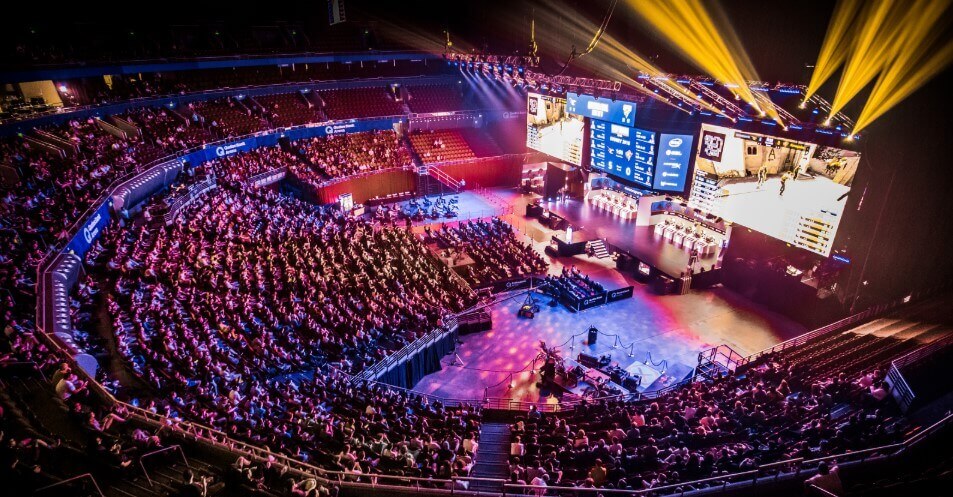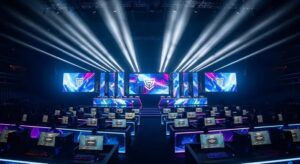The Global Conquest of Competitive Gaming: More Than Just a Game
For decades, the epicenters of competitive gaming were firmly established in North America, Europe, and East Asia. Cities like Seoul, Cologne, and Los Angeles were the hallowed grounds where legends were forged and nine-figure prize pools were won. However, the digital roar of the crowd is no longer confined to these traditional strongholds. A seismic shift is underway, as the vibrant and rapidly growing world of Esports News turns its attention to new frontiers. Emerging markets across South Asia, Latin America, and the Middle East are rapidly transforming from passive audiences into active, dominant forces in the Gaming Industry. This evolution isn’t just about hosting tournaments; it’s about building entire ecosystems, fostering new talent, and creating a truly global stage for Competitive Gaming. The rise of international esports events in these regions signifies a pivotal moment, marking the democratization of a digital sport and heralding a new era of global competition.
Section 1: Deconstructing the Modern Esports Ecosystem
To understand the significance of this global expansion, one must first appreciate the intricate machinery that powers a modern esports event. It’s a complex interplay of cutting-edge technology, world-class talent, and a deeply passionate Gaming Community. Far from being a simple video game tournament, a major international event is a spectacle on par with traditional sporting championships.
The Pillars of Competition: Games, Players, and Organizations
At the core of esports are the games themselves, the digital battlegrounds where skill is tested. The landscape is dominated by several key genres. MOBA Games (Multiplayer Online Battle Arena) like League of Legends and Dota 2 require immense strategic depth and teamwork, drawing massive audiences for events like the World Championship and The International. High-octane FPS Games (First-Person Shooters) such as Valorant, Counter-Strike, and Call of Duty test players’ reflexes and tactical execution. Meanwhile, the Battle Royale genre, popularized by titles like Fortnite and Apex Legends, offers a chaotic and unpredictable viewing experience. These aren’t just Video Games; they are complex competitive platforms supported by developers who meticulously balance gameplay to ensure a high skill ceiling. The players are the stars—digital athletes who train for thousands of hours, supported by professional organizations that provide coaching, analytics, and financial backing.
The Technological Backbone: Powering Peak Performance
Professional esports demands uncompromising performance, and the technology behind it is a critical component. The standard for PC Gaming at the pro level involves custom-built Gaming PCs equipped with the latest and most powerful Graphics Cards from NVIDIA or AMD. These systems are designed to push extremely high frame rates, which are then displayed on high-refresh-rate Gaming Monitors (typically 240Hz or 360Hz) to ensure the smoothest possible gameplay and minimize input lag. Every millisecond counts. The infrastructure for a LAN (Local Area Network) event is a marvel of network engineering, requiring a dedicated, zero-latency connection for all competitors to guarantee a level playing field. This extends to the broadcast, where sophisticated production setups rival those of major television networks, enabling seamless Game Streaming to platforms like Twitch, which is a constant source of Twitch News and community engagement.
The Community Engine: Fueling the Fandom
Unlike traditional sports, esports was born on the internet, and its community is its lifeblood. The connection between fans, players, and teams is incredibly direct. Live streaming platforms allow fans to watch their favorite players practice, interact with them in real-time, and consume content around the clock. This constant engagement builds powerful narratives and fierce loyalties, transforming a simple tournament into a dramatic saga. The Gaming Culture that surrounds esports is a powerful economic driver, influencing everything from Gaming Peripherals sales to viewership numbers that attract non-endemic sponsors like automotive and fashion brands.

Section 2: The New Frontier: Why Emerging Markets are Esports’ Future
The saturation of established markets has led publishers and tournament organizers to seek new avenues for growth. They’ve found a goldmine in regions with massive, young, and digitally-native populations. The narrative is no longer about bringing esports to these regions, but about these regions shaping the future of esports.
The Demographic and Digital Boom
Countries in South Asia, Southeast Asia, and Latin America possess a key ingredient for esports growth: a massive youth demographic. With billions of people under the age of 30, these regions represent an enormous, untapped talent pool and audience. This demographic shift is coupled with skyrocketing internet and smartphone penetration. While high-end Gaming Laptops and PCs were once a barrier to entry, the explosion of Mobile Gaming has created an accessible pathway into competitive gaming for hundreds of millions. Titles specifically designed for mobile or optimized for a wider range of hardware have become cultural phenomena, creating grassroots competitive scenes that are now graduating to the world stage. This accessibility is a game-changer, creating a much larger and more diverse player base than the traditional PC Gaming or Console Gaming scenes could alone.
Economic and Cultural Validation
Hosting a major international esports championship provides a massive economic and cultural boost to a city. It drives tourism, creates jobs in event management and broadcast production, and stimulates local economies. More importantly, it provides cultural validation. For a city to be chosen as a host, it signals to the world that it is a technologically advanced and globally connected hub. This inspires a new generation. When local fans see global superstars competing in their hometown and witness local heroes battling on the same stage, it ignites passion and ambition, fueling the growth of the domestic Game Development scene and inspiring players to pursue professional careers. This validation helps shift the perception of gaming from a simple hobby to a legitimate sport and career path.
Navigating Unique Challenges
The path to establishing a premier esports hub is not without its obstacles. Infrastructure can be a significant hurdle; reliable, high-speed internet and large-scale venues capable of supporting complex technical requirements are not always readily available. Navigating local government regulations, securing visas for international players, and attracting initial investment can be challenging. Furthermore, these regions often lack the established grassroots infrastructure of veteran scenes, such as robust amateur leagues and university esports programs. Overcoming these challenges requires a concerted effort from tournament organizers, local governments, and private investors who see the long-term potential of the Gaming Industry.
Section 3: Weaving a Global Web: The Intricacies of International Competition
A truly global esports circuit is more than just a series of events; it’s a complex logistical and cultural network that connects players and fans across continents. The success of this network relies on bridging technical, geographical, and even strategic divides.
The Logistical Gauntlet of a Global Tournament

The operational complexity of bringing together teams from a dozen different countries is immense. It involves coordinating international travel, navigating complex visa application processes, and providing secure accommodation and practice facilities. On the technical side, organizers must replicate the perfect competitive environment for every match. This means sourcing hundreds of identical high-performance PCs, monitors, and Gaming Peripherals like Gaming Headsets, Gaming Keyboards, and Gaming Mice to eliminate any potential hardware disparity. The broadcast itself is a multilingual operation, requiring different teams of commentators and analysts to cater to audiences in various languages, ensuring that the Esports News and live action are accessible to everyone, everywhere.
The Clash of Metas: Strategy on a Global Scale
One of the most fascinating aspects of international esports is the clash of regional “metagames” or “metas.” A meta refers to the dominant strategies, character/weapon choices, and overall playstyles that a region collectively believes to be the most effective. For example, in League of Legends News, you’ll often hear about the aggressive, teamfight-heavy style of the LPL (China) versus the slower, more methodical macro-play of the LCK (Korea). Similarly, in Counter-Strike News, European teams are often lauded for their deep tactical playbook, while North American teams might be known for a more individualistic, aim-focused style. International tournaments are the only place these different strategic philosophies collide. This clash not only creates incredible entertainment and compelling storylines but also accelerates the evolution of the game’s strategy at the highest level, a core element of good Game Design.
Technology as the Great Unifier
Technology is the thread that ties the global esports fabric together. Advancements in Cloud Gaming and streaming technology have reduced latency and improved viewing quality, making the experience more immersive for fans watching from thousands of miles away. Publishers and developers, using powerful tools like Unreal Engine or Unity, are increasingly building global accessibility features directly into their games and competitive platforms. This includes global servers, integrated tournament modes, and robust spectator tools. Furthermore, localization efforts, such as regional social media channels and partnerships with local influencers, help make global events feel personal and relevant to diverse fan bases, whether they’re following on Steam or the Epic Games launcher.
Section 4: A Blueprint for Success: Recommendations for Aspiring Esports Hubs
For any region looking to become a staple on the international esports circuit, a proactive and strategic approach is essential. It’s about building a sustainable ecosystem, not just a one-time event.

Pros: The Benefits of Cultivating a Scene
- Economic Growth: Attracts tourism, investment, and sponsorship, creating jobs in tech, hospitality, and media.
- Global Recognition: Puts the city and country on the map as a modern, tech-forward destination.
- Youth Engagement: Provides positive and structured competitive outlets for a massive youth population.
- Industry Development: Acts as a catalyst for growth in local Game Development, tech startups, and digital media.
Cons: Potential Pitfalls to Avoid
- Infrastructure Gaps: Underestimating the technical requirements for venues and connectivity can lead to event failure.
- Lack of Grassroots Support: Focusing only on top-tier events without building a local talent pipeline is unsustainable.
- Regulatory Hurdles: Without government support, issues with visas, permits, and logistics can derail an event.
- Financial Risk: High upfront investment costs require a solid business plan and long-term vision to ensure profitability.
Recommendations and Best Practices
Aspiring regions should focus on a bottom-up approach. Start by fostering local and collegiate tournaments to build a competitive base. Invest in “esports-ready” venues with robust fiber internet and power infrastructure. Governments can help by streamlining visa processes for esports athletes and offering incentives for international organizers. Finally, building a strong narrative around local teams and players is key. By promoting homegrown talent, regions can create powerful emotional connections with their audience, ensuring that when the global circuit comes to town, the local crowd has a hero to cheer for. This holistic approach ensures long-term, sustainable growth that benefits the entire Gaming Community.
Conclusion: The Dawn of a Truly Global Era
The expansion of the premier esports circuit into new, passionate markets is the most exciting development in Competitive Gaming today. It represents the maturation of the industry from a niche subculture into a truly global sporting phenomenon. As technology becomes more accessible and communities become more connected, the geographical barriers that once defined the scene are dissolving. This global shift will not only uncover the next generation of superstar players from unexpected corners of the globe but will also enrich the Gaming Culture with new perspectives, strategies, and stories. The future of esports is not in one city or one country; it is a decentralized, interconnected global network, and its new coliseums are being built all over the world.












